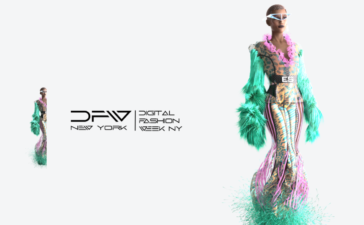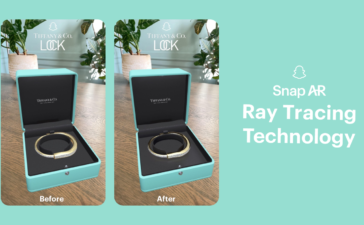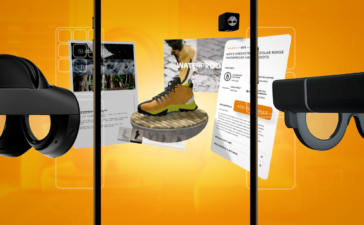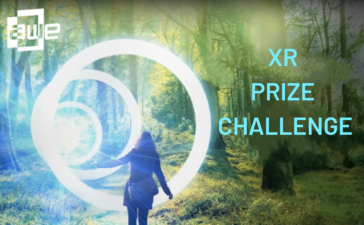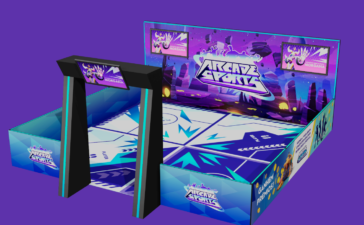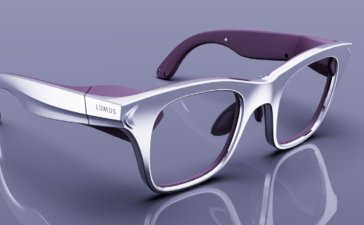Over the years, ARPost has covered the physical nature of XR in athletics and sports a number of times – from how athletes use XR to improve their game, to how gamers can use VR sports to stay fit, to how thrilling and active a good AR team game can be for players and spectators alike. XR is also increasingly being used in another capacity: fan engagement.
Is AR the Future of Fan Engagement?
Athletes are usually sports fans, but are sports fans usually athletes? This article isn’t about how XR can make a sports viewer into a finely-tuned machine, or how a sports viewer can become a star in their own right through things like esports. After all, not all sports fans want to do those sorts of things.
However, it’s probably fair to say that all sports fans want to feel closer to the athletes and teams that they follow. That doesn’t mean getting onto the field, but it might mean getting out of the stands. Sports teams and property managers are increasingly using XR for sports fan engagement to let fans get closer to their passion, if not closer to the action.
In-Arena Opportunities for CBJ Fans
In January, NHL team The Columbus Blue Jackets unveiled “The Fan Zone” in their home Nationwide Arena in partnership with MVP Interactive. Followers of ARPost might remember that MVP Interactive also made appearances in our 2021 article about how and why brand engagement is driving XR development.
“The Blue Jackets are one of the few sports organizations taking the lead to bring fans the latest in cutting-edge technology with first-ever immersive experiences to their arena,” MVP Interactive CEO James Giglio said in a release shared with ARPost. “Our team was honored to work with everyone at CBJ to bring technology forward with multi-generational experiences to their Fan Zone.”

The 4,000 square-foot space overlooks the team’s practice area and includes a number of XR experiences, as well as the eSports Lounge for CBJ gaming, the team’s official esports arm. As exciting a development as esports is in the general gaming world, we’re most interested in the XR fan engagement activations.
“With the upgraded space and technology advancement of our new Fan Zone, we hope to provide a world-class experience for fans of all ages,” Blue Jackets Vice President of Marketing Ryan Chenault said in the release.
XR in the Fan Zone
In the “Slapshot Challenge” fan engagement activation, fans choose between three different game modes including “Shots on Goalie” pitting their skills against a virtual goaltender. Using a real stick and a ball, the fan’s movements are tracked by sensors to replicate an on-ice experience in a space reminiscent of the Cave VR system.

The “Goalie Challenge” flips the scenario, both figuratively and physically. In full goalie gear, the fan now faces the screen where a virtual contender appears to launch physical balls their way. While the goalie in the slapshot challenge is entirely automated, the placement of balls fired off in the goalie challenge can be controlled by a friend via a computer interface.
“The Blue Jackets are dedicated to removing barriers to the game of hockey and investment in this space is a meaningful nod to this mission,” said Chenault. “By providing both stick-in-hand and controller-in-hand activations, we can give fans an opportunity to not only watch the game but experience it first-hand.”

There are less intense fan engagement opportunities as well. A “Pose with a Pro MorphingStation” gives fans an opportunity to take a selfie next to a virtual replica of their favorite Blue Jackets. A similar activation allows fans to pose in a virtual Blue Jackets jersey. All of these activations reward the fans with videos and images optimized for social media.

Implementation and Stats
On entering the Fan Zone, fans have the opportunity to check in by scanning a QR code and providing an email address to receive their videos and photographs. According to figures provided to ARPost following the launch of the activation, over 1,200 fans entered the Fan Zone on opening night and 375 provided emails to receive their digital mementos.
Further, the “average dwell time across experiences was 24.55 seconds.” This may not seem like a long time, but it is averaged across all of the fan engagement experiences though the challenges likely engaged fans for significantly longer than the AR photo opportunities.
NIL in AR
The “Pose with a Pro” fan activation presented by the Blue Jackets shows that there is a lot of promise in sports fan engagement with virtual replicas of their favorite athletes. That isn’t just limited to professional sports, however.
College sports are tremendously popular but its athletes were, to some degree, barred from benefiting from that popularity for most of the history of college sports. That’s because college athletes were largely prevented from benefiting from their name, image, and likeness (NIL) by the NCAA – the organization that governs college sports.
However, in 2021, the NCAA began loosening NIL rules, opening up potentially lucrative opportunities for college athletes. AR publishing platform LDP Studio claims to be part of the first “NILAR” (name, image, and likeness in augmented reality) agreement. The signee? The University of Tennessee senior tight end Jacob Warren for the Craven Wings restaurant chain.
“We believe AR Hero will change the way college football fans experience the game by engaging more people with the players they know and love,” LDP Studio VP of business development Jessee Black said in a release shared with ARPost. “It’s a really cool and futuristic new concept for QR code use which increases engagement for businesses and brings fun to the fans.”

AR Hero, the tool that runs the experience, invites users to trigger fan engagement activation via a QR code. From there, fans can take photos and videos with an AR version of Warren that goes through different poses giving plenty of opportunities to fans.
“With AR Hero, fans can feel like they are part of the action and experience the players they know and love in a whole new way,” said Black. “Businesses have the opportunity to create more engagement with fans through ‘NILAR’ as well.”
The First NILAR Agreement?
It’s easy to be skeptical of whether this fan engagement initiative is really the first NILAR agreement. It is very probably the first NILAR agreement in college sports and it just might be the first of its kind anywhere as LDP Studio claims.
Digital twins of celebrities aren’t brand new. However, the ownership of these twins has long been problematic. The owner of a digital twin is usually the studio that commissioned it, rather than the individual that the twin is created from.
NILAR agreements with athletes as well as other individuals have huge potential to give individuals more control over their own digital twins. That’s a big win for those individuals from an economic standpoint, but it’s also a good idea from an ethical perspective.
Getting Sports Fans Out of Their Seats
With good AR fan engagement, everybody wins. Fans get more interactive ways to engage with their favorite content and athletes. Athletes can have an AR proxy that’s available to fans while they’re busy training, on the field, or at home. Teams get new ways to bring fans deeper into the sports that they love (and, yes, collect some much-cherished user data).
The good news keeps getting better. XR fan engagement activations are becoming simpler to use, more interactive, and are even being created in ways that are more mindful of the humans that lend their digital duplicates to these activations.













